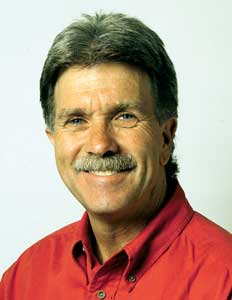Getting Out: Last week, when I visited the southern portion of
Coyote Creek Pathway, I realized how little I know of this corridor
further downstream. I wondered if I could reach intermediate points
of the path without having to start at one end or the other. Where
are the access points, and what will I see?
Last week, when I visited the southern portion of Coyote Creek Pathway, I realized how little I know of this corridor further downstream. I wondered if I could reach intermediate points of the path without having to start at one end or the other. Where are the access points, and what will I see?
Walking along Coyote Creek is beautiful in its own right, but because so many birds spend the winter along here, I feel it sweetens a walk to learn the names of our feathered neighbors. “Birding at the Bottom of the Bay,” a collaboration of members of the Santa Clara Valley Audubon Society (available at www.scvas.org, go to “Nature Shop”), is an indispensible guide to birding in our area. It is not a field guide, but it tells you where to go to see birds and what you are likely to see there. A rookie like me loves a cheat sheet like this to simplify identification. It also carefully discusses each access point along the Coyote Creek Pathway.
Ogier Ponds is a group of ponds filling holes left there by an old quarry. To reach them, travel north on Monterey Road 2.6 miles above Cochrane Road, keeping an eye out for power line towers that cross the road. Turn right at the base of those towers where you see the Model Aircraft Skypark sign. A quarter of a mile down the road, you will reach the ponds.
I walked past a glass-smooth West Pond, the first one on your right, turned left and walked along the edge of North Pond. Here the valley widens, and I felt a sense of spaciousness that must have prevailed in ages past. Before agriculture and development corralled the waters of Coyote Creek, it was a huge wetland teeming with life. Our Santa Clara Valley is part of the Pacific flyway that six million birds annually migrate through. That’s a lot of birds, but not the 66 million that used to pass by. Imagine grizzly bears, pronghorn antelope and elk watering themselves beneath a sky, noisy not with auto traffic, but the squawking of hundreds of thousands of migrating waterfowl. I would have loved to sit on top of Coyote Ridge and looked down on that.
With my cheat sheet and field guide, I sat pondside on a warm fall afternoon and saw Common Mergansers, Buffleheads, Common Goldeneyes and others that foiled me despite my tutorial help. Gobs of gulls also swim with the ducks here, mostly California and Herring gulls, so says “Birding at the Bottom of the Bay,” but their subtle differences are beyond the skill of my beginner’s eye — so far. I’ll be back.
Further north on Monterey Road, just above Metcalf Road, is a parking area at Metcalf Park. I walked south from here to Coyote Ranch, a lovely stroll past Fremont cottonwoods and another pond. I was surprised to see White Pelicans floating at Parkway Lakes as I passed. I haven’t walked north from Metcalf Park yet, but the book says it is an “excellent birding area” where “sixty species on a winter day is not unusual.” Heck, even a rookie ought to be able to identify a few.
The inescapable nuisance at any location along Coyote Creek is the freeway noise. It’s loud like Friday night at Sinaloa. But when you enter the dense stands of cottonwoods, sycamores and oaks, the noise is forgotten and you are enveloped in another world.
Another Reminder: Join me at 9 a.m. New Year’s morning for a hike at Rancho Canada del Oro. Choose between a 4-mile loop and an 8-mile loop, both with great views and scenery. There are also paths for those with limited mobility. Bring water and food with you. Dogs are not allowed.
See you there.










